
Leadership means saying the thing no one else will—and acting on it.
Every leader hits a point where the next step forward isn’t a tactic—it’s a decision. A hard one. The kind that keeps you up at night, strains relationships, or forces you to admit something’s no longer working. This chapter is about those moments.
Whether it’s letting go of a longtime employee, cutting a failing initiative, or delivering feedback no one wants to hear—progress demands courage. Complexity is often a cover for fear. Avoidance masquerades as patience. And silence signals permission. Real leadership begins when you stop nibbling around the edges and face what’s difficult, directly.
These aren’t rules for convenience. They’re rules for conviction.
Chapter 6, Hard Conversations, Hard Decisions, features these 4 fundamental (and critical) Rules:
- WEEK 24— Rule No. 14: Know when to let go.
- WEEK 25— Rule No. 19: Stop doing what doesn’t work.
- WEEK 26— Rule No. 42: Feedback is a gift.
- WEEK 27— Rule No. 50: If you’re going to eat shit, don’t nibble.
WEEK 24
Rule No. 14: Know when to let go.
Why: Because, holding on to dead weight costs you everything.

Rule No. 14 SUMMARY ![]()
Good leaders don’t just build — they prune. Knowing when to let go of a person, product, process, or plan is a mark of maturity and strategic clarity. Holding on too long stifles progress. Letting go at the right time creates room for growth, health, and innovation. Endings aren’t failures — they’re often the first step toward something better.
Ask Yourself: What am I keeping alive that is actually holding me back — and what would happen if I let it go this week?
WEEK 24 Action Step: This week, identify one area in your business, team, or personal leadership where you’re holding on out of habit, comfort, or fear rather than strategic value. Map the costs — financial, operational, and cultural — of keeping it. Decide whether to continue, restructure, or end it by Friday.
Make this Rule —Know when to let go —immediately actionable and force a tangible decision rather than abstract reflection.
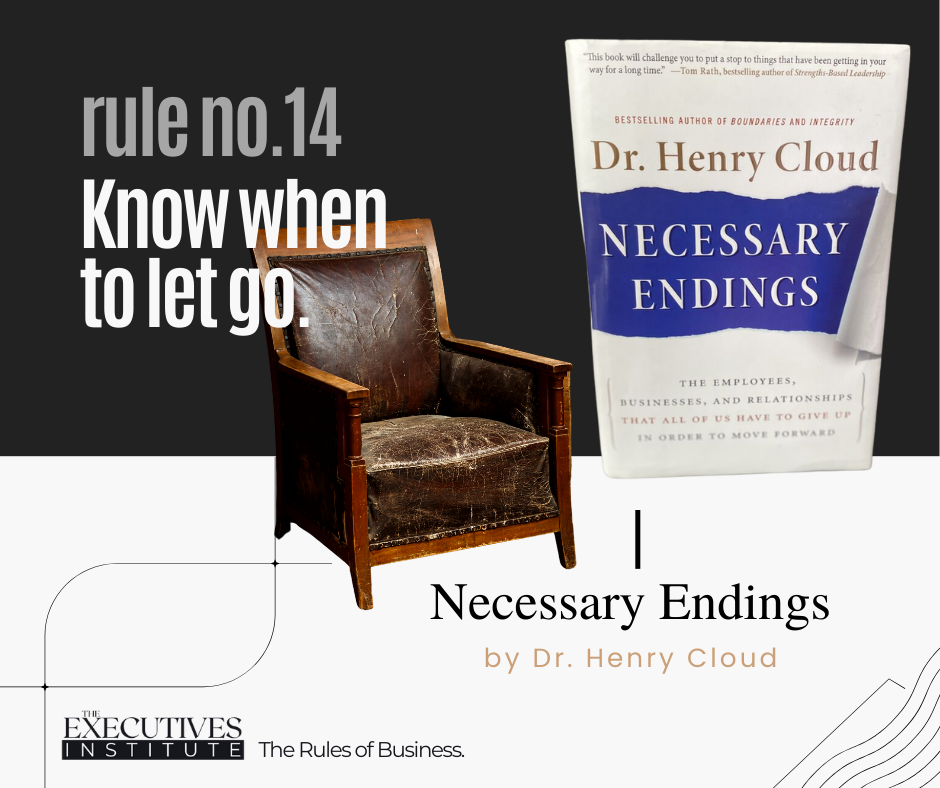
WEEK 24 RECOMMENDED READING: Necessary Endings by Dr. Henry Cloud
“If you don’t end what needs to be ended, nothing new and better can begin.”
— Dr. Henry Cloud, Necessary Endings
WEEK 25
Rule No. 19: Stop doing what doesn’t work.
Why: Reinvent or decline.
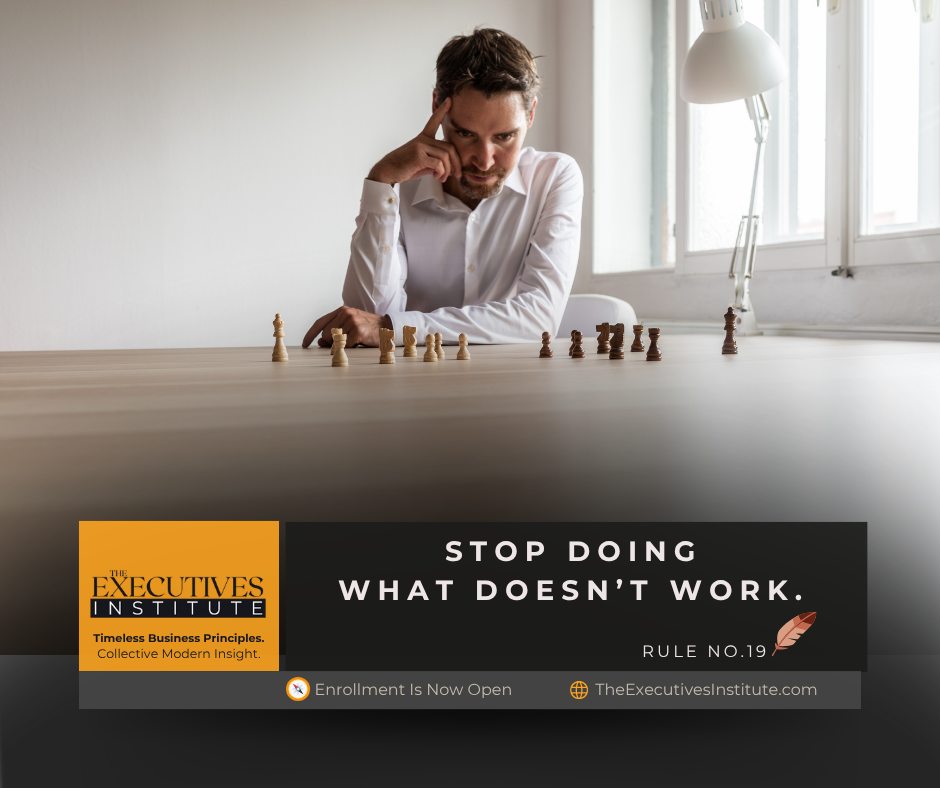
Rule No. 19 SUMMARY ![]()
Success can become its own trap. The habits, strategies, and mindsets that helped you reach your current level often become blind spots as you aim higher. This rule demands the discipline to let go of outdated behaviors—especially the ones that feel familiar, comfortable, or once-effective. It’s about recognizing that yesterday’s wins may be today’s liabilities. Real growth starts not just by adding new tactics—but by subtracting what no longer serves you or your business.
Ask Yourself: What am I still doing today that worked in the past—but is now holding me back?
WEEK 25 Action Step: Audit and Eliminate One Outdated Habit
- Review your past week and identify one behavior, habit, or process that you continued out of routine or comfort—but that added little or no value.
- Commit to stopping or delegating it for the next week.
- Track the impact: note the time saved, stress reduced, or clarity gained.
Example: If you spend hours in status meetings that rarely move the needle, cancel or delegate one this week and observe the difference.

WEEK 25 RECOMMENDED READING: What Got You Here Won’t Get You There by Marshall Goldsmith
“The higher you go in the organization, the more your problems are behavioral. The problems that got you to your current level of success are rarely the ones that will get you to the next level.”
– Marshall Goldsmith, What Got You Here Won’t Get You There
WEEK 26
Rule No. 42: Feedback is a gift.
Why: Because, you can’t improve what you won’t hear.

Rule No. 42 SUMMARY ![]()
Most people say they want feedback—until they actually get it. The truth is, most leaders aren’t wired to receive feedback well, even when they desperately need it. But feedback, when accepted without defensiveness and viewed as fuel—not fire—is a shortcut to growth, clarity, and leadership maturity. Ignore it, and you stay stuck. Embrace it, and you evolve.
Ask Yourself: Am I hearing the truth—or just what’s easy for me to accept? What blind spot might someone be trying to show me that I’ve been ignoring?
WEEK 26 Action Step: This week, intentionally seek out one piece of honest feedback from someone you trust—but who isn’t afraid to challenge you. Listen without defending, explaining, or justifying. Take notes, thank them, and identify one concrete adjustment you will make based on what you hear.
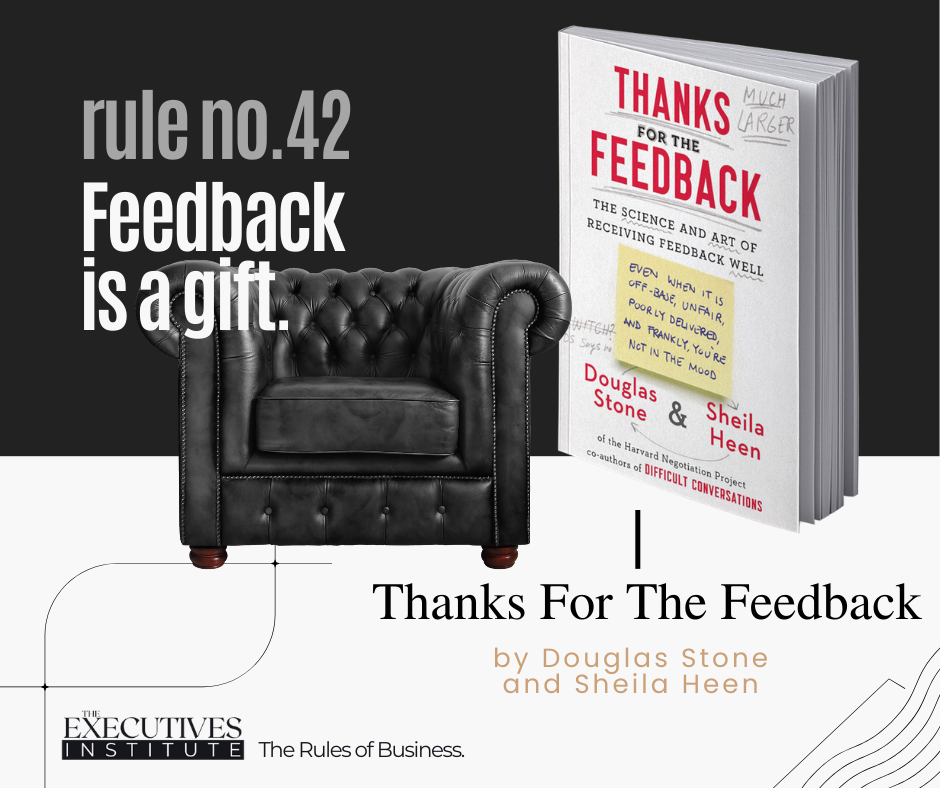
WEEK 26 RECOMMENDED READING: Thanks for the Feedback by Douglas Stone & Sheila Heen
“Receiving feedback sits at the intersection of two needs: our drive to learn and our longing to be accepted. That’s why it’s so hard—and so important.”
— Douglas Stone, Thanks for the Feedback
WEEK 27
Rule No. 50: If you’re going to eat shit, don’t nibble.
Why: Because, you need to face reality head-on.
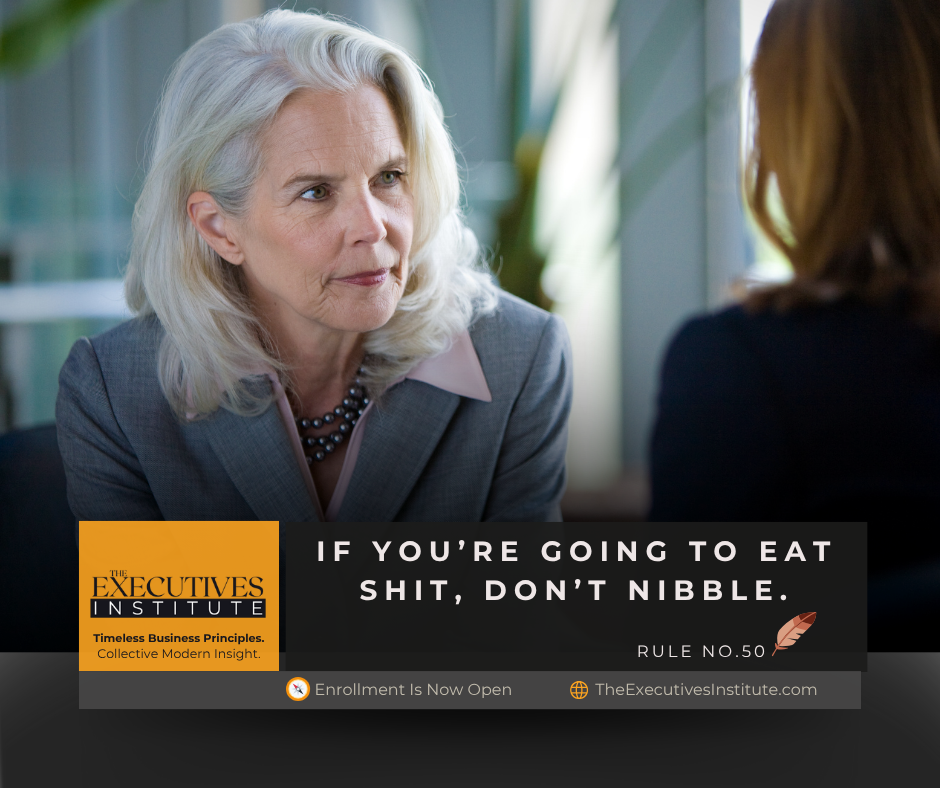
Rule No. 50 SUMMARY ![]()
When the tough decision is inevitable, stop stalling. Stop dressing it up. Go straight at it. Half-measures just prolong the pain and erode your credibility. In business, you’ll occasionally have to do something unpleasant—fire a friend, shut down a product, take a public hit. Dragging it out or sugarcoating it only makes it worse. Swallow hard, take the full bite, and move on. Fast, direct action beats slow, “polite” decay.
Ask Yourself: Am I delaying this decision to protect myself or spare others, and what’s the real cost of waiting?
WEEK 27 Action Step: Identify one difficult decision you’ve been avoiding—something that’s causing stress, uncertainty, or organizational friction. Commit to executing it fully this week. Set a clear deadline, communicate it to those affected, and take the necessary action without hesitation or half-measures. No dithering. No nibbling. Just the full bite.
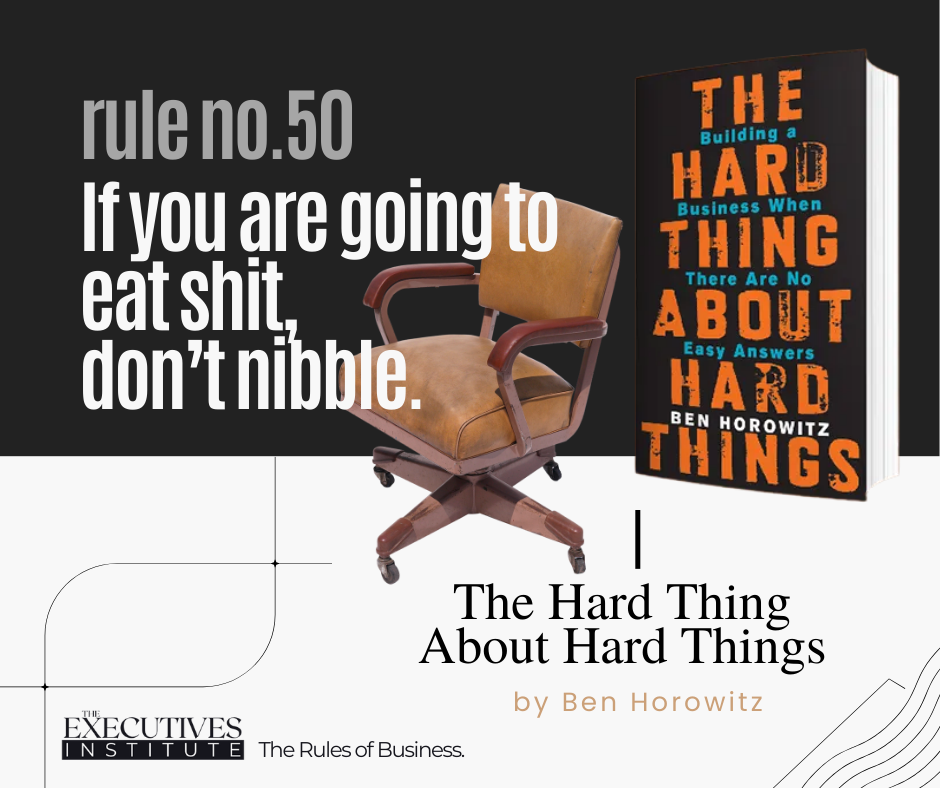
WEEK 27 RECOMMENDED READING: The Hard Thing About Hard Things by Ben Horowitz
“There are no silver bullets for this, only lead bullets.”
— Ben Horowitz, The Hard Thing About Hard Things
Congratulations — Chapter 6 Complete!
If you’ve made it through this chapter, you’ve faced the uncomfortable truths many leaders avoid. You’ve looked at what needs to end, what needs to be said, and what you’ve been tolerating for too long. That takes guts. And it’s exactly what separates real leaders from those just holding a title. Businesses don’t stall because of a lack of ideas—they stall because no one will make the hard calls. You just proved you’re willing to.
Next: Chapter 7 — Systems that Scale
Systems replace strain. Discipline replaces burnout.
You’ve cleared the path—now it’s time to build the structure. Because scaling isn’t about speed. It’s about building something that won’t collapse under its own weight. VISIT CHAPTER 7
